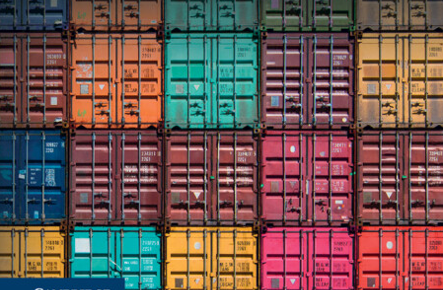
The ascendance of secondary sanctions
We live in an age of economic sanctions, of powerful states imposing restrictions on commercial and financial transactions with other states (and non-state actors) to achieve political goals. In particular, states that control key nodes in the global financial, economic and technological network can leverage global economic interdependence and wield massive extraterritorial power over other system participants. They may limit the export of sensitive technology, cut off banking services or interrupt global supply chains. In so doing, they can coerce other participants to adopt policies the latter would not otherwise have adopted. The economic and financial sanctions imposed by the West on Russia after its invasion of Ukraine in 2022 are a case in point. While these sanctions are unprecedented in terms of scale, they are part of a wider pattern of states ‘weaponizing’ global economic networks for coercive rather than cooperative ends.
Sanctions can be imposed multilaterally by the United Nations Security Council. However, due to its susceptibility to deadlock by veto, there has been an explosion, in terms of sheer number and scope, of states adopting unilateral, also known as autonomous, sanctions to achieve their political aims. Traditionally, unilateral sanctions restrict economic or financial interactions between the sanctioning state and (operators based in) the target or sanctioned state. The effectiveness of such measures will be limited, however, in case the target state retains the option to do business with non-sanctioning states, which may be willing to step in to fill the void. In order to prevent such sanctions ‘leakage’ and increase the pressure on the target state, sanctioning states may be tempted to further broaden the sanctions’ radius. In particular, they may go a step further by targeting transactions between a third state and the sanctioned state, by attaching various consequences to such transactions, e.g., access restrictions, civil and criminal penalties, and asset freezes of third country operators. These novel and more far-reaching ‘secondary sanctions’ aim to further isolate the sanctioned state and bring about behavioural change.
In practice, only the US, at least until now the world’s pre-eminent political and economic power, has unambiguously resorted to – and effectively enforced – secondary sanctions, for example regarding Iran, Cuba and China. Still, other political-economic powerhouses such as the EU and China have recently appeared to entertain the idea of imposing them, mainly to prevent circumvention of their own primary sanctions.
What we discuss in the Handbook
The growing range and changing nature of unilateral sanctions have seen the emergence of a new label of so-called ‘secondary’ sanctions, as opposed to the more traditional ‘primary’ sanctions. The Cambridge Handbook on Secondary Sanctions and International Law addresses the legality of such secondary sanctions from multiple legal perspectives, in particular general public international law, international economic law, and private law, while adding political and economic perspectives.
The Cambridge Handbook on Secondary Sanctions and International Law notes that secondary sanctions create inter-state tensions and may well violate a number of public international law regimes. They may run afoul of accepted international legal principles of jurisdiction, insofar as they are not based on a meaningful connection between the sanctioning state and the third state. They may violate the principle of non-intervention to the extent that they could be considered as coercing another state to adopt a preferred course of action. They may also breach particular treaty regimes governing (the liberalization of) international economic relations, in particular international trade law, international investment law and international monetary law, insofar as they restrict cross-border economic and financial transactions. Third states or third-country operators could potentially challenge violations of relevant international legal norms before international, or even national, dispute-settlement mechanisms, provided these have jurisdiction. At the same time, in some situations, some have argued that the international law of responsibility may possibly authorize states to impose secondary sanctions where such sanctions respond to third states’ failure to properly address another state’s serious violations of international law (e.g., an act of aggression).
The Cambridge Handbook on Secondary Sanctions and International Law also examines how third states have responded to the perceived unlawfulness of secondary sanctions and/or their adverse impacts by imposing ‘blocking statutes’ or, more recently, ‘anti-coercion instruments’. These measures prohibit operators from complying with foreign secondary sanctions and provide for counter-sanctions.
Finally, The Cambridge Handbook on Secondary Sanctions and International Law discusses the headaches which secondary sanctions may create for private economic operators. Their potential exposure to secondary sanctions complicates the already complex web of multi-jurisdictional norms governing their international business transactions. Secondary sanctions add to the compliance burden for operators and financial intermediaries, who are forced to commit substantial resources to monitor whether business activities breach not just international or local economic regulations but also foreign sanctions laws. Furthermore, secondary sanctions may compel operators to suspend or terminate business deals – deals which may be entirely lawful under the law of the contract – or risk losing access to the sanctioning state’s market. Suspending or terminating contracts on grounds of exposure to secondary sanctions, however, is not legally straightforward under private international law and the law of contracts.
The structure of the Handbook
The Cambridge Handbook on Secondary Sanctions and International Law volume comprises five parts. Part I sets the stage by explaining the notion of secondary sanctions and laying bare their economic, financial and political impact. Parts II and III review secondary sanctions in light of general international law and international economic law, respectively. Part IV zooms in on the legal impact of secondary sanctions on commercial practices and domestic contractual litigation, while Part V examines what the future holds in store for the use of secondary sanctions and possible responses thereto.
Latest Comments
Have your say!